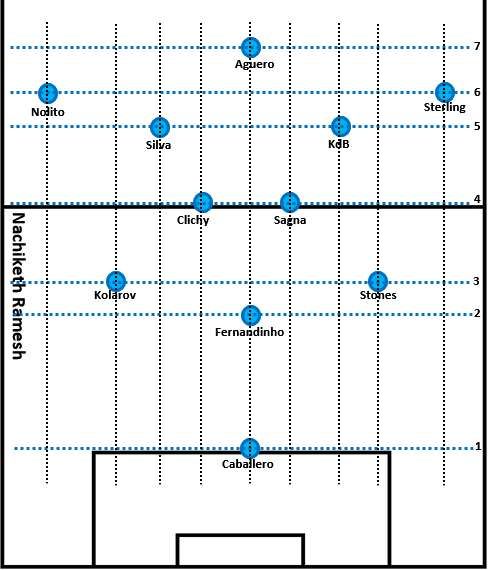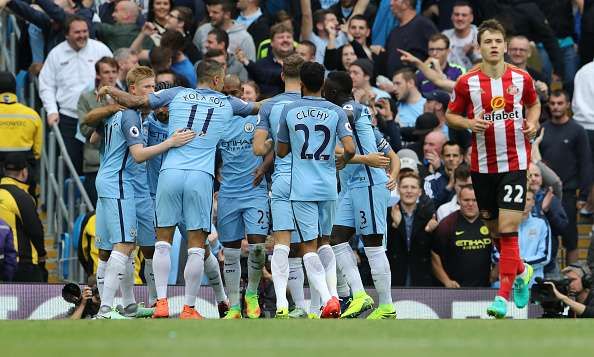
PEP TALK - 03: Guardiola era starts in England - Analysis of Manchester City's win over Sunderland.
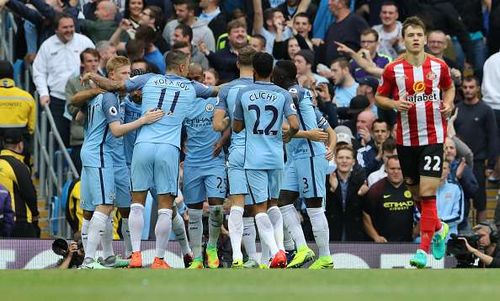
Pep Guardiola began his tenure at Manchester City with a hard earned 2-1 win over David Moyes’ Sunderland. In his first official game in England, Guardiola’s side displayed flexible attacking with width utilization, effective possession with improved positional play compared to City’s pre-season friendlies, dynamic positioning with inverted fullbacks.
The home side earned the lead through Sergio Aguero’s penalty and later through Paddy McNair’s own goal after Jermain Defoe had equalized for the visiting side.
Teams:
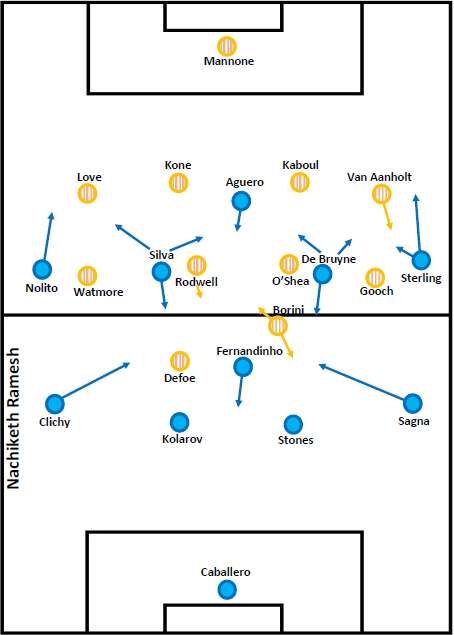
Manchester City: Willy Caballero; Gael Clichy, Aleksandar Kolarov, John Stones, Bacary Sagna; Fernandinho; Nolito, David Silva, Kein de Bruyne, Raheem Sterling; Sergio Aguero.
Sunderland: Vito Mannone; Patrick van Aanholt, Younes Kaboul, Lamine Kone, Donald Love; Lynden Gooch, John O’Shea, Jack Rodwell, Duncan Watmore; Fabio Borini, Jermain Defoe.
Guardiola started with a 4-1-4-1 formation and Moyes preferred 4-4-2.
Clichy and Sagna as inverted fullbacks
Guardiola had used his full-backs in a similar role in the friendly game against Arsenal a week ago. Against Sunderland, he chose to use Clichy and Sagna more in the central region that in the wings, effectively converting them into inverted fullbacks.
The reason behind this is mainly because of the inclusion of Silva and De Bruyne in the attacking midfield. Although the starting shape looked more like a 4-3-3 with Silva and De Bruyne playing as central midfielders or #8s, City was playing in a 4-1-4-1 with the above mentioned attacking players in #10 or central attacking midfield role.
This left Fernandinho alone in the central midfield region – prone to counter attacks from Sunderland, should City’s counter-pressing fail.
Also since Fernandinho was dropping between Stones and Kolarov - the center backs - during the build-up phase, City needed players in the central regions to facilitate ball progression through the middle and to circulate it well.
If Guardiola had decided not to use Clichy and Sagna as inverted fullbacks then while Fernandinho was dropping deep, Silva and De Bruyne should’ve dropped deeper as well.
In such a situation, in order to provide presence in the half-spaces and offer depth, Sterling and Nolito could’ve cut in from wide positions. But this would’ve made Manchester City’s attacking very predictable.
The movements of Gooch and Watmore, Sunderland’s wide midfielders, were dependent on the positioning and movements of City’s wingbacks. Gooch and Watmore were taking narrow positions when Clichy and Sagna were playing centrally.
This was freeing up City wingers, Nolito and Sterling and enabling them to take on the opponents in 1v1 situations.
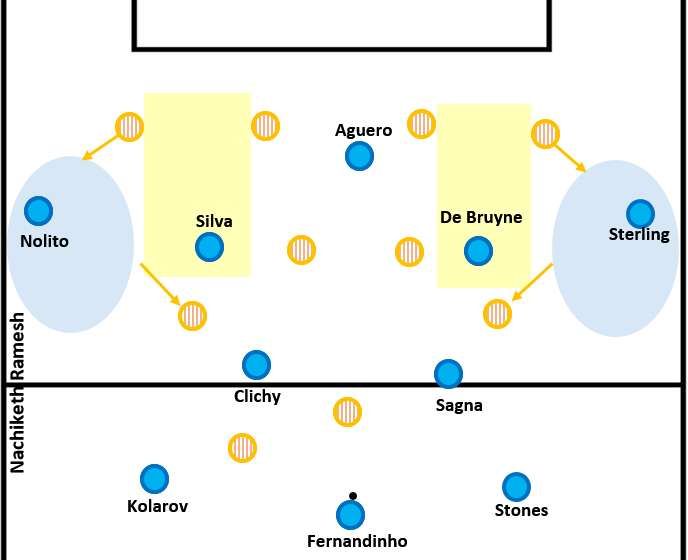
With inverted fullbacks, City players were occupying both depth and width in a manner most suited for ball progression and circulation. With inverted fullbacks and two #10s, City was changing from 4-1-4-1 to something close 3-2-2-2 formation.
With this, Manchester City players were occupying depth in 7 horizontal lines and width in 9 vertical lines.
As Louis van Gaal puts it “I want 8 lines...8 lines...so many as possible... because then the occupation of the pitch it's better,” pitch can be better occupied.
Here better means, the players can position themselves in such a way that they can create rhombuses or triangles between themselves, allowing them to beat the press of the opponents easily and move the ball towards the goal.
